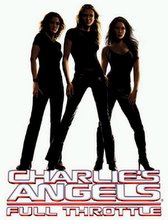Does Blogging Help
1. How easy has it been to set up your Independent Study blog and to get used to posting things on it? Were you given enough support in doing it? What other help would have been useful?
1. How easy has it been to set up your Independent Study blog and to get used to posting things on it? Were you given enough support in doing it? What other help would have been useful?
Setting up the blog is easy, all you have to do is follow the instructions and takes about 10 minutes. Posting things up on it is not hard either, all you have to do is sign in a go to new post.iI think the help we received not this year but when we made 1 the practical production was good.
2. How did the blog help with your research? Did the blog motivate you to do more and better research? How? Why?
The blod did motivte me to do more work and better research as i didnt have to print the work out but i could edit is and them post key points up. I could also change the colour of the font and put pictures up to make it look nice. By putting my research up on the blog i think this is the rreason i did more research.
3. Is it useful having all the Independent Study/blog tasks posted on the Macguffin blog? Does it make it more likely that you will get them done?
I think it is useful having all the work and tasks up on the blog because then we dont have loads of paper to carry or keep safe. This is the reason i got it done on time as it would luk neater on the blog then on paper.
4. How often (honestly!) do you check the Macguffin blog? (Remember, it should be at least twice/week).
I check the blog almost everyday but occasionally i check it every 2 days to see whats new and 2 post research i have found or do the homework set. I think i check it more now than last year partly because i have the internet at home now.
5. Has it been useful being able to see and access everyone else’s research and planning through their blogs?
Yes. I think it has been useful accessing everyones blog as i was able to get ideas and help, extra research whereas if it was on paper everyone would keep it at home and this wount give eveyone the chence to share research or get new ideas.
6. How do you feel about the fact that your teacher can keep a close check on your progress through accessing your blog? Is it too intrusive and controlling or is it encouraging and supportive?
I think it is encouraging and supportive that the teacher could see what we are doing as it means the extra work we do on the blog doesnt go unnoticed and is motivating.
7. How useful have the comments been that you received from…a. Macguffin, b. other students.
The comment i have received have been very useful and helped me improve my work.
8. How has the blog helped with your essay planning? How useful was the blog when it came to writing the essay? Do you think your first draft is better because you have used a blog?
The essay planning was challenging and as i was able to access all my research together it helped me however to be honest i didint really follow most of it. The blog was very useful when actually writing the essay as all my research was together with all the webistes so the research i did in school i could access at home and the research at home in school. I thnk my first draft is better using the blog because i didnt have to read all my research sheets as all the work was on the blog.
9. How would you evaluate the quality of your blog? What could you have done better?
I think the quality of my blog is good. I have put so much effort into it with the pictures and the colours which motivate me. I wouldnt do anything to improve it.
10. Do you think you will get a better final grade for your independent study through having used a blog?
Yes. I think i will get a better grade because i dont have to worry about printing or saving a website and could just post it up 2 make it easier.
11. Which are the best three blogs? Why?
I think all the blog are good in their own way but the blogs i like are jatinder's, Kalpan's and jaskeerat.
12. Do you think next year’s Year 13s would benefit from setting up an Independent Study blog?
I think it will benefit them a lot and this way they are more likely to go on macguffin more.
13. Are there any negative aspects to preparing for an Independent Study using a blog?
The negative aspects are that there is a chance of not being able to access the interent or if the computer decides to crash at the last minute.
14. What could be done to improve teaching and/or learning in future through blogs?
Nothing
15. Overall, are you pleased that we used blogs? Has it been interesting and enjoyable? Why? Why not?
I am happy we used blogs as it was enjoyable and motivating because we could we was able to brighten it up with colours and picturs.
